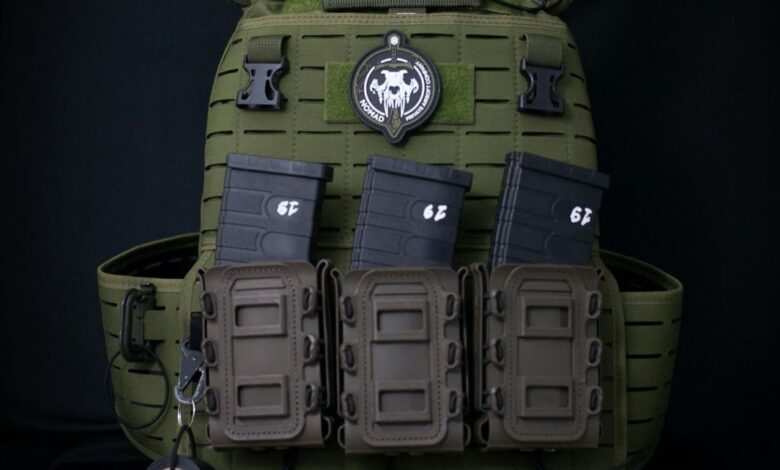The Ultimate Protection: Rifle-Rated Body Armor Explained

When considering the ultimate protection against high-velocity threats, rifle-rated body armor stands out as a critical choice. You might wonder how such armor can stop powerful rifle rounds and what materials make this possible. From ceramic to composite materials, the construction of these ballistic plates is nothing short of impressive. But it’s not just about the materials; understanding the levels of protection and rigorous testing standards is crucial. So how do you choose the right armor for your needs? Let’s explore further to ensure you’re fully prepared for any potential dangers.
What Is Rifle-Rated Armor?
Rifle-rated body armor, sometimes referred to as Level III or IV armor, is specifically designed to provide protection against high-velocity rifle rounds. This armor goes beyond the capabilities of standard bulletproof vests, which are typically rated for handgun threats.
You’ll find that rifle-rated armor incorporates advanced ballistic plates, enhancing its ability to stop rounds traveling at higher speeds and with greater penetrating power.
When selecting rifle-rated body armor, you should look for products that meet the National Institute of Justice (NIJ) standards for Level III or IV protection. Level III armor is tested to stop 7.62mm FMJ lead core rifle ammunition, while Level IV is designed to halt armor-piercing rifle rounds.
These ballistic plates are often inserted into a carrier system, providing comprehensive coverage of vital areas.
Ballistic plates can be made from various materials, each offering different levels of protection and weight. Understanding the specific threats you’re likely to encounter will help you choose the appropriate level of armor.
Materials Used
When it comes to the materials used in rifle-rated body armor, you’ll encounter several advanced options designed to offer maximum protection while balancing weight and comfort. One of the primary materials is ballistic fibers, such as Kevlar or Dyneema. These fibers are woven into dense layers, providing a flexible yet strong barrier against projectiles. However, ballistic fibers alone often can’t stop high-velocity rifle rounds.
To enhance protection, ceramic plates are frequently incorporated. These plates are made from advanced ceramics like boron carbide or silicon carbide, which can shatter incoming bullets upon impact, dispersing the energy and minimizing penetration. Ceramic plates are lightweight compared to other materials, making them a popular choice for those needing mobility.
Steel plates are another option, known for their durability and ability to stop multiple rounds. They’re usually made from hardened steel alloys and can be thinner than ceramic plates. However, they tend to be heavier, which can impact user comfort and agility.
Composite materials combine the benefits of ceramic and ballistic fibers or other substances. These hybrid solutions offer a balanced approach, providing substantial protection without excessively increasing the armor’s weight. By understanding these materials, you can make an informed decision about your rifle-rated body armor.
Levels of Protection
Understanding the levels of protection in rifle-rated body armor is crucial for selecting the right gear for your needs. Threat levels define the specific ballistic threats that armor types can withstand. The National Institute of Justice (NIJ) classifies armor into various levels based on their ability to stop specific calibers and types of ammunition.
Level III armor types are designed to stop 7.62mm NATO full metal jacket bullets, commonly used in battle rifles. This level is ideal for environments where you might face high-powered rifle threats.
Level IV armor provides even higher protection, capable of defeating armor-piercing rounds like the .30-06 M2 AP. Such armor types are essential for scenarios with extreme threat levels, ensuring the highest possible defense against advanced ballistic threats.
When choosing body armor, consider both the threat levels you might encounter and the specific armor types available. Soft armor, while flexible and lightweight, typically offers lower protection levels, such as IIA, II, and IIIA, primarily against handgun threats.
Conversely, hard armor, often made from ceramics or polyethylene, provides the higher levels of defense needed for rifle-rated protection. Understanding these distinctions ensures you’re equipped with the right armor for any threat scenario.
Testing Standards
Selecting the appropriate level of rifle-rated body armor is only part of the equation; knowing how these armor types are tested ensures you’re making an informed choice. The testing standards for rifle-rated body armor are rigorous to guarantee optimal ballistic performance. Organizations like the National Institute of Justice (NIJ) set the benchmarks for these tests.
During the certification process, armor undergoes a series of controlled tests to assess its ability to withstand specific rifle rounds. These tests involve firing various calibers at the armor under strict conditions, including specified distances and angles.
The main goal is to measure the armor’s capacity to stop bullets without excessive deformation, known as backface signature, which could cause injury.
The ballistic performance of the armor is scrutinized using high-speed photography and advanced sensors to capture data on impact resistance and energy dispersion. Only armor that consistently meets or exceeds the NIJ standards earns certification.
This rigorous certification process ensures that when you choose rifle-rated body armor, you’re relying on scientifically verified protection.
Understanding these testing standards enables you to trust the ballistic performance of your chosen armor, confident it meets the highest safety criteria.
Choosing the Right Armor
Choosing the right armor requires a balance of understanding your specific needs and the technical specifications of available options.
First, consider the threat level you’re likely to encounter. Rifle-rated body armor is designed to stop high-velocity rounds, but not all plates offer the same protection. Prioritize armor that meets or exceeds NIJ standards for your specific threat environment.
Next, focus on sizing options and comfort. Ill-fitting armor can hinder mobility and reduce protection efficacy. Measure your torso accurately and choose a manufacturer that offers a range of sizes to ensure a snug fit. Comfort is critical, especially if you’ll be wearing the armor for extended periods. Look for designs that distribute weight evenly and incorporate breathable materials.
Price range is another crucial factor. High-quality armor can be expensive, but it’s an investment in your safety. Compare products within your budget, keeping in mind that cheaper options may compromise on durability or protection levels. Customization options, such as add-on pouches or modular components, can enhance the functionality of your armor. Don’t settle for one-size-fits-all solutions; tailor your gear to fit your specific operational requirements.
Conclusion
In the grand arena of life, where danger lurks like a cunning adversary, rifle-rated body armor stands as your steadfast knight. Crafted from the finest materials and rigorously tested to meet NIJ standards, it offers a shield against high-velocity threats. By choosing the right armor, you’re not just donning protection; you’re empowering yourself with the ultimate safeguard. Like a fortress, this armor ensures you’re ready for any battle, embodying a perfect balance of strength, comfort, and resilience.



